For ease of reading and digestion I have broken the vRetreat Cohesity update into two sections.
- Part 1 – Cohesity Update/Intro & O365 Data Protect
- Part 2 – Cohesity Simple At Scale, Integrations, Helios & More
As always, the initial 20-30minutes covered off the Cohesity background and mission to “Redefine Secondary Storage”.
Cohesity Business Update & Intro
Cohesity founder was Mohit Aron who was one of the original founders of Nutanix, and was instrumental to developing the Google File System.
Cohesity is currently investor driven with investments from:
- Sequoia
- Google ventures
- HPE
- Cisco
- SoftBank vision fund
I believe they are into their 4th funding round.
The current leadership team at Cohesity is made up of the following industry experts driving the vision and technology:
- Dan Warmenhoven (former CEO NetApp)
- Carl Eschenback (former president and COO VMware)
- Rob Salmon (former president and head of GTM NetApp)
- Rawlinson Rivera (CTO Office VMware vSAN architect)
In August 2018, Cohesity announced that their revenues increased 300% in FY 2018 and announced a massive customer growth as Enterprises globally embrace the companies hyper-converged secondary storage platform.
The growth added numerous enterprise customers in FY 2018 including including Air Bud Entertainment, AutoNation, Beam Suntory, BC Oil and Gas Commission, Bungie, Harris Teeter, Hyatt, Kelly Services, LendingClub, Piedmont Healthcare, Schneider Electric, the San Francisco Giants, TCF Bank, the U.S. Department of Energy, the U.S. Air Force, and WestLotto.
Enterprises seemingly are selecting Cohesity to fuel their hybrid cloud journey, with more than half of new deployments in the last fiscal year embracing Cohesity’s technology that empowers companies to easily store, protect, and manage data and apps in the cloud.
More on this company announcement can be found here.
Cohesity Storage Play
Cohesity place themselves into the secondary storage play, but plan to innovate and push the boundaries of that market space. The image below outlines the Cohesity view of the world:
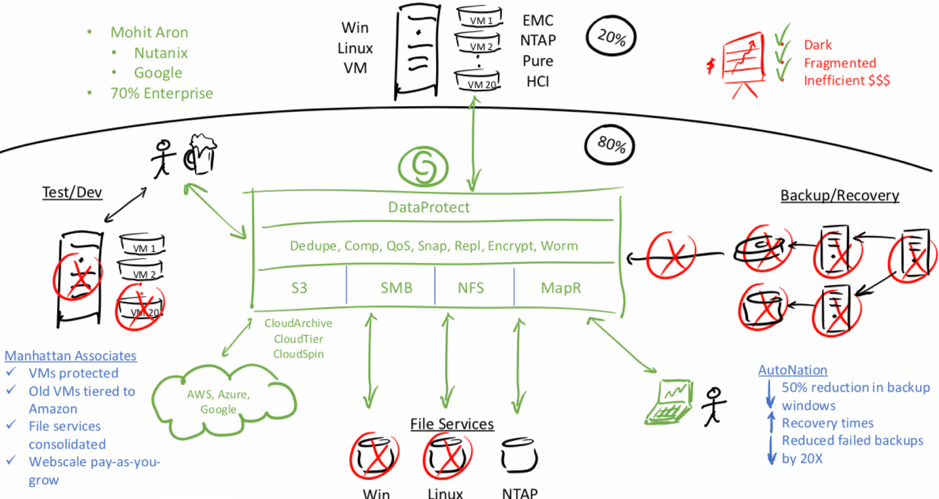
Cohesity believe that 20% of workloads should be placed and maintained on primary storage platforms, with the remainder 80% residing on secondary storage.
The typical use case for any secondary storage platform is backup and 80% if Cohesity initial engagements start with this as it stands to date. The remaining use cases are:
- Data protection services for primary infrastructure
- File and object-based storage (SMB, NFS, S3/Cloud storage, etc) a lot of NAS workloads don’t need all flash! Why invest in something you don’t need..
- Test/dev as you have a copy using Cohesity data protect, therefore provision for test and dev! Utilising snaptree to deliver this.
- In built MapR analytics and data engine (can be used for ransomware detection and prevention)
Recent Developments
The Cohesity release timetable is based on a functional releases every quarter. The recent developments have provided the following:
- Updated versions of DataPlatform & DataProtect
- Widening certified platform options Support for SAP HANA, Office365, Hyperflex
- OEM with HP – goes live mid-march (ish)
- Service provider program & functionality (launched October 2018)
The image below outlines 6.1/6.2 release highlights:
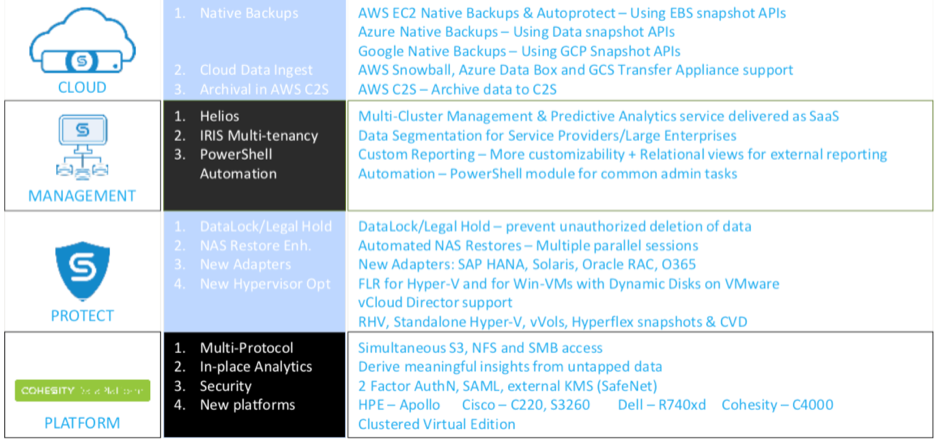
Cohesity & O365 Data Protection
Is it the responsibility of the cloud/SaaS provider to protect your data? – there is an argument for this but one thing they would never be able to prevent is a user-based error.
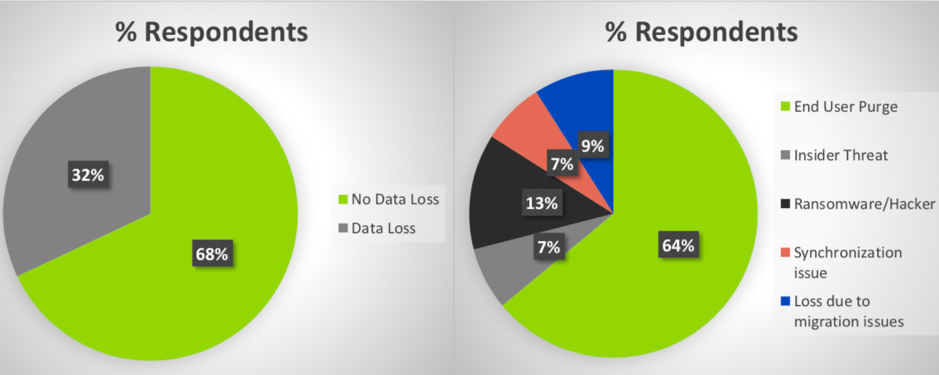
As can be seen above, over 70% of loss was data purged by users and insider threats.
“Data protection for SaaS is a shared responsibility between the SaaS customer and provider.”
Data protection for SaaS should be broken down as follows to ensure you are covering yourself for the various data loss scenarios:
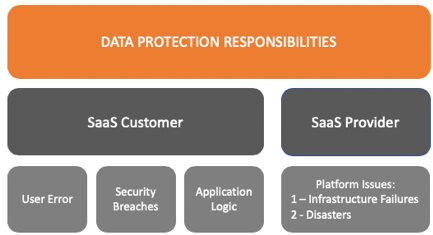
So, what is the need for O365 data protection over and above the built in capabilities?
- Inconsistent policies
- Different policies for data retention and deletion across applications
EXO/OD4B/SPO/Teams/Groups
- Instead standardize data protection & hence compliance approach across diverse source types and reduce operational cost (Same platform for O365 requirements than your standard secondary storage on premise(s) or in the cloud)
- Different policies for data retention and deletion across applications
- Does not meet data protection requirements of regulations
- Some compliance regulations warrant storing backups on an alternate location (on-premise(s) / other cloud(s)) vs production data.
- Issues associated with data recovery
- No way to go back to specific point in time
- Archival, Legal hold require customer to contact Microsoft and there is no time bound SLA
- No in-place restore feature and cumbersome recovery process can lead to unreasonable RTOs
- Data for deleted accounts is purged
- Once an account is deleted from AD, associated data is no longer retained
At this moment in time, the data protect features for O365 are limited to Exchange Online only. For me this is the biggest flaw as it stands, and once Cohesity can cover more sourced within O365 the offering will become more rounded.
The O365 exchange online data protection options can be summarised in the below inverted pyramid structure:
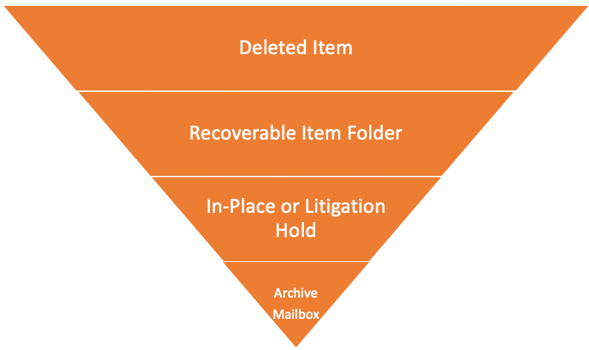
Cohesity has seen that there is a gap for offsite replication (out of Azure maybe?) integrated protection against other secondary storage platforms with granular recovery and search functionality. The granular search and recovery function supports in-place or new destination recovery. Self-service recovery is also possible by integrating the Cohesity platform with ServiceNow.
The architecture for O365 Data Protect with Cohesity at a high level is as follows:
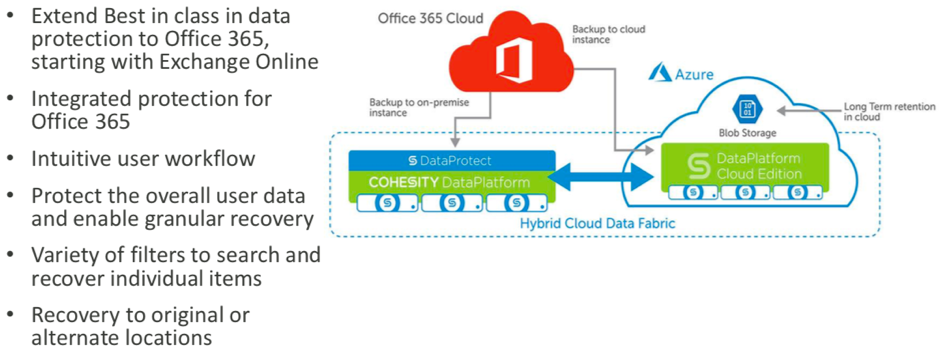
Cohesity has a view to become a SaaS protection company and is enabling its Technology/products to drive this vision.
A video showcasing the Cohesity data protect for O365 can be seen below:
